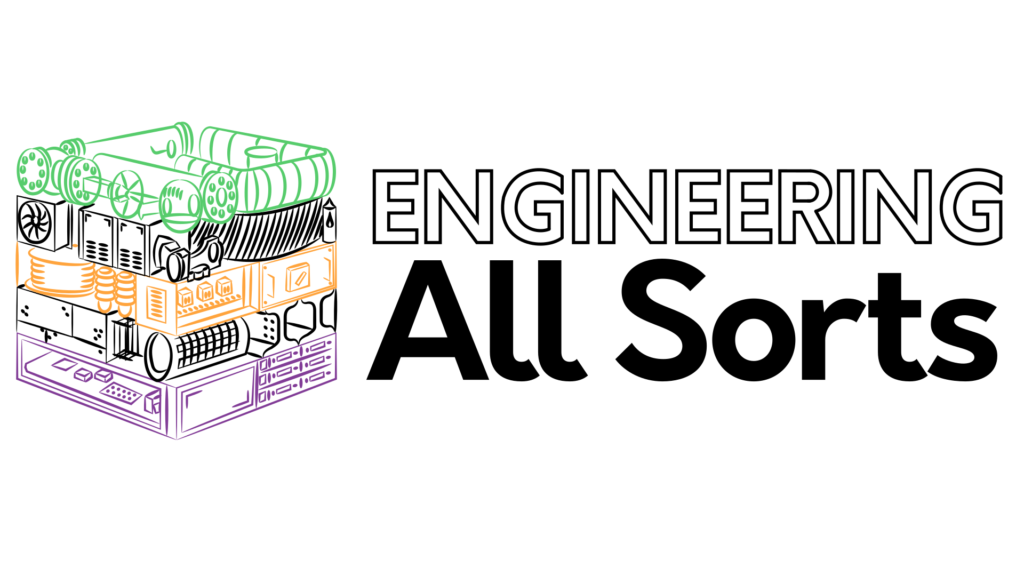Why do passionate engineers love what they do? What is it that drives them to achieve great and complicated things. And what keeps them going through the sometimes tough environments and challenges of the engineering workplace?
It’s something that I found in myself when I was quite young, but I only recognised it when I was older. Soon I started seeing it in others, too…
It’s a tough gig
Engineering can be a slog sometimes. Noisy, abrasive environments, strange hours, crawling into all sorts of pits and machines, tricky problems and hard decisons. These are just some of the things engineers must live with everyday.
But there’s got to be a reason so many folks stick to it for so long, right? Otherwise, why persevre? Why not find another job with in a better environment – with air-con and coffee?
From what I’ve seen, there is one thing that links all passionate engineers together. The Spark.
A Spark in the eye
I’m not talking about something that requires safety goggles. I’m talking about the inspired twinkle that you can find in the eyes of passionate engineers.
The Spark can be lit in many places. In a passion project. In an elusive error in a ream of code late at night. You can see it in the search for the most elegant solution, or one that doesn’t even exist yet.
It’s the Spark that lights a fire within many engineers. Most of the time all we can see are is effects; driven and focused engineers. Sometimes however, we can see it directly.
Look for the glint in the eye, the quiet thoughtfulness as cogs turn in the brain. Look for it in the almost obsessive compulsion that’s powers passionate engineers – to create.
A Spark of my own
I’ve had my Spark as long as I can remember. I felt it when I saw the 6-foot tall steel marble run at the STEM museum that we visited in primary school. It inspired me to create my own run with my dad. It was much more modest in size, but I was proud of it.
The Spark drove me to take apart and repair my grandma’s clock at about the same age. I’m still not sure how I got it working again.
My Spark had me inspired for years to create all manner of contraptions with motorised (and later, robotic) LEGO sets. It was when I eclipsed the Lego pieces, and found the need for more and more advanced equipment, that I decided to become an Engineer.
I carry the Spark with me today. It helped me through the design and installation of production lines and new facilities – seeing a new product being created is incredibly rewarding. It keeps me active on projects around the house, too. Whether it is building a park bench for the garden, or building a new computer, I just want to create something new.
The Spark even played a part in creating this website. In fact, if you can couple the Spark with something the world needs, you have a very powerful partnership.
Feed the Spark
You may have seen the Spark in yourself or in others, but how do you encourage those who have it, so it can flourish and grow? The first thing is to acknowledge it.
Your students might not know what it is at first, or that it is something very special. They probably also won’t know where it can lead them, and how it can differentiate them from others in their career. Call it out when you see it, let them know what you see, and how it makes them special.
Once you have found the Spark, you can start to feed it. The main thing about the Spark is encouaging your students to create. Be it an egg drop challenge, a coding marathon, or a design activity, the act of creation is key to feeding the Spark.
You don’t have to stick to the core elements of STEM, either. The Spark often overflows into the creation of art, games, stories and many other areas. The STEM topics usually focus on some sort of functionality, but don’t forget that culture and form can also benefit from the Spark.
Some of the most memorable activities that fed my Spark were:
- Egg drop challenge (we did this again at a conference a few years ago, and I still loved it!)
- Pasta bridge, where students build a bridge out of pasta and glue, that must allow for a fixed mass truck to cross it
- The Wier Warman Challenge, an Aussie engineering competition, which has a great history of tough engineering challenges
- Electronics learning kits such as those you get from any decent electronics store
- Bottle rockets – again, we did this in primary school, and again at university. It was almost more fun when I was able to use the dynamics of projectiles calculations to predict it’s flight. We also got pretty fancy and included a two-stage design for extra distance (I don’t think we ever recovered the second stage…)
- Visiting and exploring science and tech museums – you can’t beat these kinds of places, as the sheer concentration and curation of cool ideas is well worth it
Yes, engineering can be tough sometimes. When it’s 3am and you are crawling through a machine on an inspection, it’s easy to get discouraged. The Spark lights the way, however. Even in these situations, the Spark forces you to stop and think ‘how can we make this better?’ and ‘why are we doing it this way?’.
Once you have found the Spark, make sure you feed it with interesting opportunities to create. Creation feeds the Spark, and the Spark drives the engineers of the past, present and future.
Where have you seen the Spark?
Photo on Foter.com

